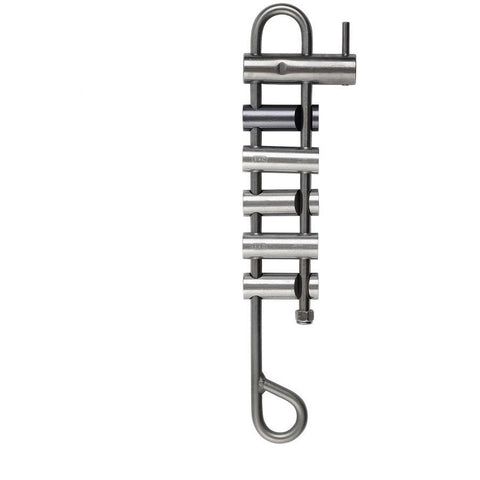SMC Rappel Rack Assembly
J Frame (or Open Racks) differ from U racks because they allow the user to adjust friction, while under load, by adding or removing bars. This unique feature results in greater control of the rate of descent. SMC J racks formed out of stainless-steel bar stock, and masterfully welded for exceptional strength and durability.
These racks are longer and equipped with 6 bars which allow for a broad variation in the amount of friction created. The top bar, which receives the most wear, is larger and constructed from stainless steel and is equipped with a Tie-Off Bar to facilitate tie offs or quickly add extra friction. The remaining 5 bars are machined aluminum.
Features and Benefits:
- Adjust friction by adding or removing bars while under load
- Brake bars are replaceable
- May be used as either a rappel or lowering device
- Does not twist rope, as can occur when using a Figure 8 type descender
- Meticulously welded eye
- May be used with single or double ropes of varying diameters
- Provides wide range of friction and control under varying weights and applications.
- Equipped with one stainless steel Tie-Off Bar and 5 Aluminum bars for extra friction and control
- Made in the USA
Specifications
- Model #: NFPA14001
- Material: Stainless Steel Frame & Tie-Off Bar, 5 Aluminum Brake Bars
- Finish: Polished Anodized
- Dimensions: 14.4" Long
- Weight: 29.2 oz (828g)
- NFPA1983 Certified
Customer Reviews
QUESTIONS & ANSWERS
Have a Question?
Be the first to ask a question about this.





